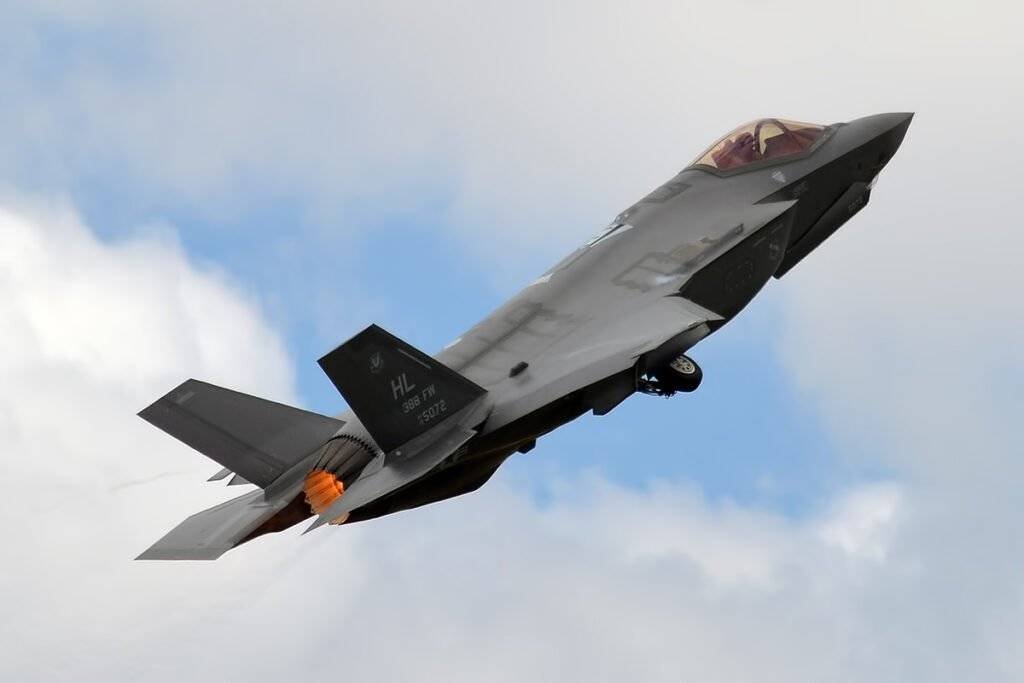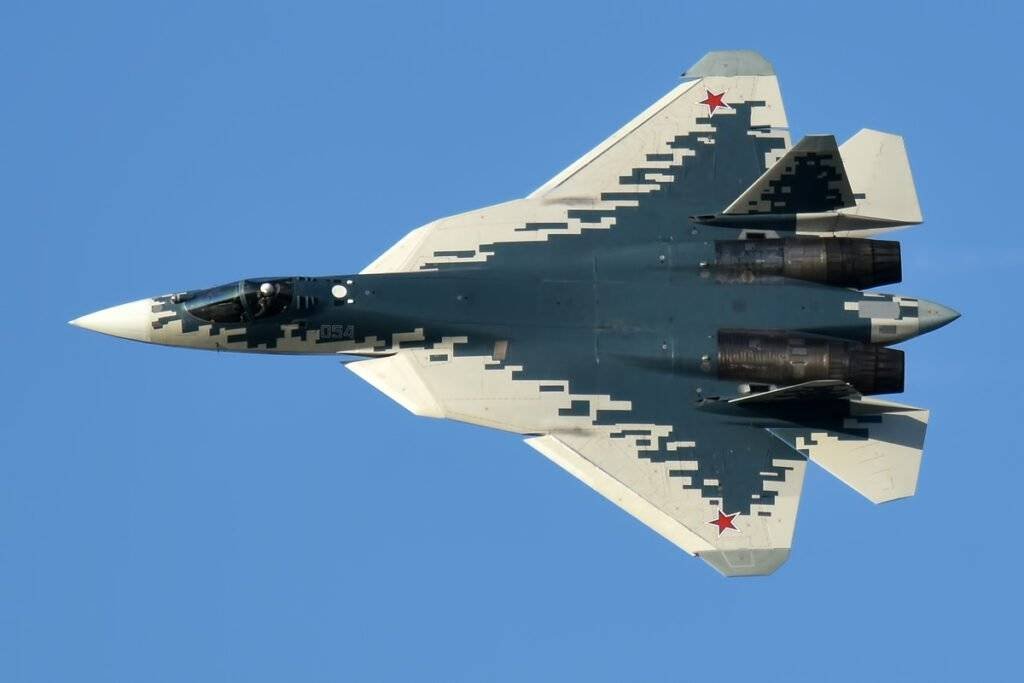In the constantly changing realm of aerial warfare, the rivalry among sophisticated fighter aircraft continues to be intense. Two serious competitors in this field are the F-35 Lightning II, created by Lockheed Martin, and the Sukhoi Su-57, designed by Sukhoi of Russia.
As countries aim to strengthen their air force capabilities, it is crucial to conduct a thorough analysis of the technical expertise of these aircraft.
The F-35 Lightning II represents the highest level of versatility, designed specifically for carrying out various tasks such as ground attacks, reconnaissance, and air defense operations. On the other hand, the Sukhoi Su-57 is a representation of aerial supremacy, prioritizing the control of airspace and offering assistance to ground forces. Lockheed Martin has developed three different versions of their aircraft, known as the F-35A, F-35B, and F-35C. Each variation is designed to meet distinct operational needs. In contrast, Sukhoi’s aircraft represents adaptability, incorporating sophisticated avionics and stealth technologies.
Stealth Technology: Both aircraft use stealth features to reduce radar detection, however they employ distinct approaches. The F-35 attains stealth capabilities through a carefully engineered structure, internal compartments for weapons, and unique coatings, guaranteeing reduced detectability across many spectrums. The Su-57 utilizes faceted surfaces, internal bays, and radar-absorbent materials to attain stealth capabilities. However, there are ongoing arguments on its effectiveness when compared to Western rivals.
Performance: The F-35 has exceptional agility, achieves supersonic speeds, and possesses superior sensor fusion capabilities. The device’s capacity to function effortlessly in many settings, along with a wide range of sensors, establishes its position as a formidable entity. In contrast, the Su-57’s exceptional mobility, made possible by its thrust-vectoring engines, demonstrates its capacity to perform intricate aerial maneuvers. Nevertheless, the specific performance data of the Su-57 are still undisclosed due to its limited operational deployment.
Avionics and sensors:
Both aircraft are equipped with advanced avionics and sensor suites, which improve situational awareness and combat effectiveness. The F-35’s sensor fusion technology combines data from multiple sources to provide pilots an exceptional level of awareness on the battlefield. Similarly, the Su-57 incorporates advanced technology such as an active electronically scanned array (AESA) radar, electro-optical targeting system, and electronic warfare suite to guarantee better sensor capabilities.
Weapons Payload: Both aircraft are equipped with internal weapons bays, allowing them to maintain their stealth profile while carrying a wide range of air-to-air and air-to-ground bombs. The F-35’s ability to work well with guided bombs, missiles, and standoff weaponry provides flexibility in carrying out different mission scenarios. In contrast, the Su-57 is prepared to utilize sophisticated Russian armaments, specifically developed to address the requirements of contemporary combat situations.
Cost and Production: The F-35 program has been subject to examination due to its excessive expenses and delays, however attempts to increase manufacturing have resulted in lower costs per unit. However, the Su-57 program has faced financial difficulties and delays in production, leading to slower deployment and a restricted operational presence.
Operational Deployment: The F-35 has been extensively deployed in multiple countries, including the United States, Israel, and NATO allies. There are plans to produce thousands of units. However, the Su-57 is still in its early phases of being put into use, as just a few prototypes and pre-production versions have been given to the Russian Air Force.
Ultimately, the F-35 Lightning II and the Sukhoi Su-57 represent the highest level of technological progress in contemporary fighter aircraft. Although the F-35 has been widely deployed and has a well-established production line, the Su-57 possesses distinct advantages such as exceptional maneuverability and possible cost benefits. When countries make decisions about buying military equipment, the choice between these two aircraft depends on their strategic goals and operational needs.
THE ISSUES

Cost Overruns: The F-35 program has had substantial cost overruns. The initial projections significantly underestimated the eventual expenses of development and production. The intricacy of the program, along with alterations in requirements and design, resulted in significant escalations in expenses.T
Technical Challenges: The F-35 has encountered numerous technical difficulties, specifically related to its software systems and avionics. The problems have varied from software glitches to malfunctions in the aircraft’s radar and sensor systems. The program’s development and implementation have been delayed due to these technological problems.
Maintenance and Reliability: The aircraft’s maintenance requirements and overall reliability have been subject to heightened concerns. Some detractors contend that the F-35’s maintenance requirements exceed the initial expectations, resulting in escalated expenses and diminished operational readiness for missions.
Performance Limitations: Although the F-35 is a flexible multi-role fighter intended to replace many earlier aircraft models, some detractors contend that it lacks certain performance capabilities when compared to specialized aircraft. For instance, certain individuals doubt its maneuverability and air-to-air combat capability in comparison to specialized air superiority fighters.
Supply Chain Issues: The F-35 program is characterized by intricate global supply chain dynamics, as components are produced in multiple nations. This has resulted in difficulties in synchronizing manufacturing and guaranteeing quality control, which could potentially affect the dependability and accessibility of the aircraft.
Stealth Performance: Although the F-35 is specifically engineered to possess stealth characteristics, there have been ongoing discussions on the efficacy of its stealth capabilities when faced with sophisticated air defense systems. Advancements in radar technology may diminish the aircraft’s stealth advantage in specific situations, as argued by some.
Notwithstanding these criticisms and obstacles, proponents of the F-35 contend that it continues to offer substantial capabilities, including as sophisticated sensors, networking capabilities, and the capacity to operate in many situations. Furthermore, continuous upgrades and enhancements to the aircraft’s systems are intended to resolve some of the reported difficulties.

Like the F-35, the Su-57 program has faced setbacks and difficulties in securing finance.
Development Delays and Funds: The aforementioned problems have hindered the progress and efficiency of the development and production procedures, resulting in a lack of clarity on the schedule for complete implementation and operational preparedness.
Restricted stealth capabilities: Although the Su-57 is advertised as a stealth fighter, concerns have been raised over the efficacy of its stealth capabilities in comparison to other fifth-generation aircraft such as the F-22 Raptor and F-35 Lightning II. Some observers contend that the design trade-offs taken to achieve stealthiness may not yield the intended level of effectiveness, hence potentially diminishing the aircraft’s capacity to survive in contemporary air defense settings.
Engine Reliability: The Su-57 encountered initial challenges regarding the development of its powerplant, which affected its reliability. The aircraft was originally fitted with the Saturn AL-41F1 engines, which were developed from engines utilized in previous Russian fighter aircraft. Nevertheless, reports indicated that these engines failed to reach the anticipated performance standards. In the future, the Su-57 is anticipated to be outfitted with the more sophisticated Izdeliye 30 engines. However, worries persist regarding the dependability and accessibility of these powerplants.
Cost and Affordability: Similar to other sophisticated fighter aircraft, the Su-57 is an expensive platform to develop and manufacture. The limitations on Russia’s defense budget and the economic difficulties it faces have led to concerns regarding the feasibility of acquiring the Su-57 on a wide scale. This has the potential to restrict the quantity of aircraft that Russia may deploy, so affecting its overall military capacities.
Restricted Export Prospects: Although Russia has promoted the Su-57 for international sales, its exorbitant price and performance deficiencies may curtail its appeal to prospective purchasers. Furthermore, the export potential of the aircraft may be limited by geopolitical factors and competition from other advanced fifth-generation fighters.
Incorporation of Sophisticated Systems: The Su-57 integrates numerous cutting-edge technology, such as avionics, sensors, and weaponry. Nevertheless, the process of incorporating these technologies and guaranteeing their smooth functioning has presented difficulties during the development phase. The effectiveness of the aircraft in combat circumstances may be compromised by issues pertaining to software development, compatibility, and interoperability.
Although the Su-57 may have certain possible drawbacks, it remains a notable progression in Russian military aviation technology and capabilities. Continued research and upcoming modifications may resolve the stated flaws, improving the aircraft’s performance and its applicability in contemporary air combat.
More on Sukhoi
Sukhoi-30MKI The Backbone of the IAF

